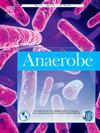A rapid genome-proteome approach to identify rate-limiting steps in the butyrate production pathway in probiotic Clostridium butyricum, CBM588
IF 2.6
3区 生物学
Q3 MICROBIOLOGY
引用次数: 0
Abstract
Objectives
Clostridium butyricum ferments non-digested dietary fibre in the colon to produce butyric acid. Butyrate is a four-carbon, short-chain fatty acid (SCFA) which has multiple health benefits. Many microbial products of pharmaceutical or industrial interest, such as butyrate, are produced in low quantities due to rate-limiting steps in their metabolic pathway, including low abundance or low activity of one or more enzymes in the pathway. By identifying the former, appropriate enzymes can be over-expressed to increase product yields, however, methods to determine these enzymes are laborious. To improve butyrate production in C. butyricum probiotic strain, CBM588, a novel rapid genome-proteome approach was deployed.
Methods
First, whole genome sequencing was performed and the 8 genes involved in butyrate production identified on the chromosome. Second, the relative abundance of these enzymes was investigated by liquid chromatography-mass spectrometry (LC-MS) analysis of total cytosolic proteins from early stationary phase cultures.
Results
Phosphotransbutyrylase (Ptb), butyrate kinase (Buk) and crotonase (Crt) were found to be the least abundant. Over-expression episomally of the corresponding genes individually or of the ptb-buk bicistron led to significant increases in butyrate titre per density of culture from 10 to 24 h, compared to the wild type.
Conclusions
Our findings pave the way for over-expressing these genes chromosomally to generate a recombinant probiotic with improved butyrate production and potentially enhanced gut health properties.
一种快速基因组-蛋白质组学方法鉴定益生菌丁酸梭菌(CBM588)丁酸盐生产途径中的限速步骤。
目的:丁酸梭菌在结肠中发酵未消化的膳食纤维以产生丁酸。丁酸盐是一种四碳短链脂肪酸(SCFA),具有多种健康益处。许多具有制药或工业价值的微生物产物,如丁酸盐,由于其代谢途径中的限速步骤,包括途径中一种或多种酶的低丰度或低活性,产量很低。通过鉴定前者,适当的酶可以过表达以提高产品产量,然而,确定这些酶的方法是费力的。为了提高丁酸C. butyricum益生菌CBM588的丁酸盐产量,采用了一种新的快速基因组-蛋白质组学方法。方法:首先进行全基因组测序,在染色体上鉴定与丁酸盐产生相关的8个基因。其次,通过液相色谱-质谱(LC-MS)分析早期固定相培养的总细胞质蛋白,研究了这些酶的相对丰度。结果:磷酸转丁酸酶(Ptb)、丁酸激酶(Buk)和巴豆酶(Crt)的丰度最低。与野生型相比,相应基因单独或pbb -buk双强体的过度表达导致培养10至24小时内每密度丁酸滴度显著增加。结论:我们的研究结果为染色体上过表达这些基因以产生重组益生菌铺平了道路,该益生菌可以提高丁酸盐的产量,并可能增强肠道健康特性。
本文章由计算机程序翻译,如有差异,请以英文原文为准。
求助全文
约1分钟内获得全文
求助全文
来源期刊

Anaerobe
生物-微生物学
CiteScore
5.20
自引率
8.70%
发文量
137
审稿时长
76 days
期刊介绍:
Anaerobe is essential reading for those who wish to remain at the forefront of discoveries relating to life processes of strictly anaerobes. The journal is multi-disciplinary, and provides a unique forum for those investigating anaerobic organisms that cause infections in humans and animals, as well as anaerobes that play roles in microbiomes or environmental processes.
Anaerobe publishes reviews, mini reviews, original research articles, notes and case reports. Relevant topics fall into the broad categories of anaerobes in human and animal diseases, anaerobes in the microbiome, anaerobes in the environment, diagnosis of anaerobes in clinical microbiology laboratories, molecular biology, genetics, pathogenesis, toxins and antibiotic susceptibility of anaerobic bacteria.
 求助内容:
求助内容: 应助结果提醒方式:
应助结果提醒方式:


